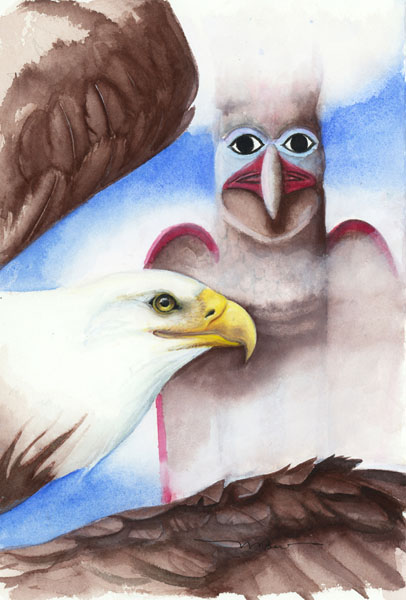

An original from from 2012.
From Wikipedia: The Bald Eagle (Haliaeetus leucocephalus; hali = salt, aeetus = eagle, leuco = white, cephalis = head) is a bird of prey found in North America. A sea eagle, it has two known sub-species and forms a species pair with the White-tailed Eagle (Haliaeetus albicilla). Its range includes most of Canada and Alaska, all of the contiguous United States, and northern Mexico. It is found near large bodies of open water with an abundant food supply and old-growth trees for nesting. The Bald Eagle is an opportunistic feeder which subsists mainly on fish, which it swoops down and snatches from the water with its talons. It builds the largest nest of any North American bird and the largest tree nests ever recorded for any animal species, up to 4 meters (13 ft) deep, 2.5 meters (8.2 ft) wide, and one metric ton (1.1 tons) in weight. Sexual maturity is attained at the age of four to five years. Bald Eagles are not actually bald; the name derives from an older meaning of "white headed". The adult is mainly brown with a white head and tail. The sexes are identical in plumage, but females are larger than males. The beak is large and hooked. The plumage of the immature is brown. The Bald Eagle is the national bird of the United States of America and appears on its Seal. In the late 20th century it was on the brink of extirpation in the continental United States. Populations recovered and the species was removed from the U.S. federal government's list of endangered species on July 12, 1995 and transferred to the list of threatened species. It was removed from the List of Endangered and Threatened Wildlife in the Lower 48 States on June 28, 2007.
Copyright Marian Berger. All rights reserved; images are protected under US copyright laws and may not be copied or reproduced in any manner.